N,N-Diethylhydroxylamine

N,N-Diethylhydroxylamine structure
|
Common Name | N,N-Diethylhydroxylamine | ||
|---|---|---|---|---|
| CAS Number | 3710-84-7 | Molecular Weight | 89.136 | |
| Density | 0.9±0.1 g/cm3 | Boiling Point | 133.0±0.0 °C at 760 mmHg | |
| Molecular Formula | C4H11NO | Melting Point | −26-−25 °C(lit.) | |
| MSDS | Chinese USA | Flash Point | 45.0±0.0 °C | |
| Symbol |


GHS02, GHS07 |
Signal Word | Warning | |
| Name | N,N-Diethylhydroxylamine |
|---|---|
| Synonym | More Synonyms |
| Density | 0.9±0.1 g/cm3 |
|---|---|
| Boiling Point | 133.0±0.0 °C at 760 mmHg |
| Melting Point | −26-−25 °C(lit.) |
| Molecular Formula | C4H11NO |
| Molecular Weight | 89.136 |
| Flash Point | 45.0±0.0 °C |
| Exact Mass | 89.084061 |
| PSA | 23.47000 |
| LogP | -0.09 |
| Vapour density | 3.07 (vs air) |
| Vapour Pressure | 5.2±0.4 mmHg at 25°C |
| Index of Refraction | 1.433 |
| Storage condition | Flammables area |
| Stability | Stable. Hygroscopic. Flammable. Incompatible with strong oxidizing agents, strong acids. |
| Water Solubility | soluble |
CHEMICAL IDENTIFICATION
HEALTH HAZARD DATAACUTE TOXICITY DATA
MUTATION DATA
|
| Symbol |


GHS02, GHS07 |
|---|---|
| Signal Word | Warning |
| Hazard Statements | H226-H312 + H332-H315-H319 |
| Precautionary Statements | P280-P305 + P351 + P338 |
| Personal Protective Equipment | Eyeshields;Faceshields;full-face respirator (US);Gloves;multi-purpose combination respirator cartridge (US);type ABEK (EN14387) respirator filter |
| Hazard Codes | Xn:Harmful |
| Risk Phrases | R10;R20/21;R36/37/38;R40 |
| Safety Phrases | S36/37-S45-S36/37/39-S26-S16 |
| RIDADR | UN 1993 3/PG 3 |
| WGK Germany | 1 |
| RTECS | NC3500000 |
| Packaging Group | III |
| Hazard Class | 3 |
| HS Code | 2928000090 |
| Precursor 10 | |
|---|---|
| DownStream 10 | |
| HS Code | 2928000090 |
|---|---|
| Summary | 2928000090 other organic derivatives of hydrazine or of hydroxylamine VAT:17.0% Tax rebate rate:9.0% Supervision conditions:none MFN tariff:6.5% General tariff:20.0% |
|
Hydrogen abstraction ability of different aromatic nitroxides.
Free Radic. Res. 38(1) , 67-72, (2004) Indolinonic aromatic nitroxides have been shown to efficiently inhibit free radical mediated oxidation reactions in biological systems. Since all antioxidants also possess pro-oxidant activity, possib... |
|
|
The effect of diethylhydroxylamine on the incidence of tumors induced by benzo(a)pyrene in the mouse.
Drug Chem. Toxicol. 7(4) , 315-27, (1984) Groups of 20 male and 20 female CD-1(ICR)Br mice were treated either with 0, 3, 30, or 300 mg diethylhydroxylamine (DEHA)/kg-day (administered via the drinking water) from 57-112 days of age. For the ... |
|
|
N,N-diethylhydroxylamine: a new electron donor to photosystem II.
Biochem. Biophys. Res. Commun. 179(2) , 1127-33, (1991) Diethylhydroxylamine, when added to beet spinach thylakoid membranes in the reaction mixture enhanced both photosystem II mediated dichlorophenolindophenol photoreduction and whole chain electron tran... |
| N,N-Diethylhydroxylamine |
| pennstop,anhydrous |
| DEHA |
| pennstop |
| DIETHYL HYDROXYLAMINE |
| N-Hydroxydiethylamine |
| N-DiethylhydroxylaMine |
| [Ethyl(hydroxy)amino]ethan |
| ethylhydroxyethylamine |
| N-Ethyl-N-hydroxyethanamine |
| N,N-Diethylhydroxyla |
| Ethanamine, N-ethyl-N-hydroxy- |
| Diethylhydroxyamine |
| MFCD00002126 |
| N,N-diethyl-hydroxylamine |
| N-ethyl-N-hydroxyethylamine |
| Pennstop 1866 |
| EINECS 223-055-4 |
 CAS#:121-44-8
CAS#:121-44-8 CAS#:75-07-0
CAS#:75-07-0 CAS#:854182-24-4
CAS#:854182-24-4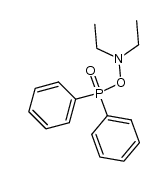 CAS#:102269-06-7
CAS#:102269-06-7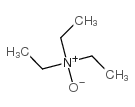 CAS#:2687-45-8
CAS#:2687-45-8 CAS#:109-89-7
CAS#:109-89-7 CAS#:10467-10-4
CAS#:10467-10-4 CAS#:79-24-3
CAS#:79-24-3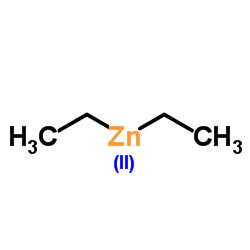 CAS#:557-20-0
CAS#:557-20-0 CAS#:75-03-6
CAS#:75-03-6 CAS#:4090-60-2
CAS#:4090-60-2 CAS#:23170-82-3
CAS#:23170-82-3 CAS#:125419-20-7
CAS#:125419-20-7 CAS#:19026-39-2
CAS#:19026-39-2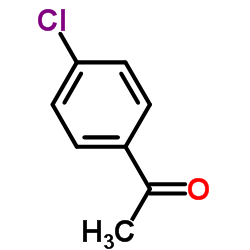 CAS#:99-91-2
CAS#:99-91-2 CAS#:50-00-0
CAS#:50-00-0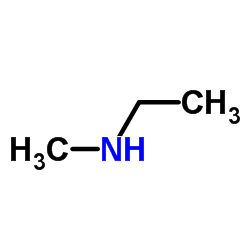 CAS#:624-78-2
CAS#:624-78-2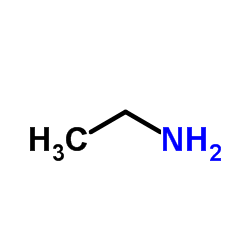 CAS#:75-04-7
CAS#:75-04-7 CAS#:99-02-5
CAS#:99-02-5
